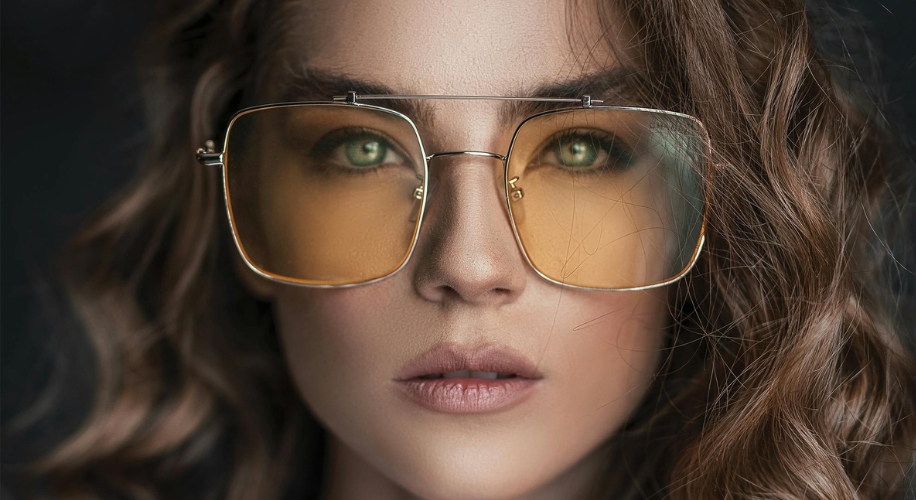Amber Eyes: Separating Fact from Fiction

Reference: Tehmasip Khan
In the kaleidoscope of eye colors, amber eyes stand out as a unique and captivating hue. This article aims to shed light on the truths and dispel the myths surrounding amber eyes. Join us as we continue our fact from fiction series and explore the mesmerizing world of amber eye color, its meanings, and the beauty it brings to the human gaze.
What Color are Amber Eyes?
Amber eyes are a distinct and rare eye color characterized by a golden or coppery hue, often described as a warm, honey-like shade. The color amber is often associated with a mix of light and dark pigments, creating a captivating and warm color that can range from honey-brown to golden-yellow.
What Causes Amber Eyes?
Amber eyes, with their warm golden tones, are a striking variation in the spectrum of human eye colors. Unlike more common shades like brown or blue, amber eyes are a result of a unique combination of genetics and pigmentation. This special color is the result of a high concentration of yellow pigments called lipochrome, combined with a low concentration of melanin.
Do I Have Golden Amber Eyes?
Amber Eyes vs Hazel Eyes
Amber eyes are often mentioned in the same breath as hazel eyes. While hazel eyes encompass a range of colors, including green and brown, amber eyes specifically lean towards the warm, golden-brown tones. Amber eyes lack the green or brown tones seen in hazel eyes and are generally uniform in color.
Amber Eyes vs Brown Eyes
Amber eyes often have a warm, golden or coppery hue that gives them a unique, striking appearance, while brown eyes generally present a deeper, richer shade of brown, ranging from light honey to dark chocolate. Both colors can vary greatly in intensity and depth, but amber eyes are relatively rarer and tend to stand out more.
Is it Rare to Have Amber Eyes?
Amber eyes are extremely rare, with estimates suggesting that less than 5% of the global population has them. Their scarcity makes them a unique and striking feature. Most eye color distributions, including the more common shades like brown, blue, and green, are more prevalent compared to amber.
What Ethnicities Have Amber Eyes?
Amber eyes can appear in individuals from various ethnic backgrounds. While they are most commonly observed in people of East Asian descent, they can also be found in individuals of European, Middle Eastern, and Latin American heritages. The presence of amber eyes is due to specific genetic variations that affect the distribution of pigments in the iris, rather than being confined to any particular ethnicity.
Separating Fact from Fiction
Myth: Amber Eyes Have Mystical Powers
Reality: There’s a belief that amber eyes are associated with supernatural or mystical abilities, such as heightened intuition, wisdom, or clairvoyance, which is purely speculative and not supported by scientific evidence. While eye color doesn’t determine personality traits, the symbolism adds a layer of fascination to the allure of amber eyes.
Myth: Amber Eyes Have Health Implications
Reality: Another myth is that amber eyes are indicative of specific health conditions or genetic anomalies, but eye color alone does not provide reliable information about health beyond the genetic basis for its color.
Celebrating the Beauty of Amber Eyes

Reference: Ali Pazani
In conclusion, amber eyes bring a touch of warmth and individuality to the tapestry of human diversity. Understanding the facts behind their genetics, colors, and meanings allows us to appreciate the unique beauty each pair of amber eyes brings to the world.
At Zenni Optical, we celebrate the rich diversity of eye colors and offer a wide range of eyewear to complement every gaze. Explore our collection and find the perfect frames to enhance your vision and showcase the beauty of your eyes.
About the Author: Dr. Sophia Moh, OD, ABOC
Dr. Sophia Moh, OD, is an optometrist based in the Bay Area, California. She holds a doctorate from UC Berkeley School of Optometry and has worked in various eye care settings, including primary care optometry, general ophthalmology, community health clinics, and Veterans Affairs. Dr. Moh is dedicated to improving global vision health by making high-quality, affordable eyewear accessible to all. She is also a certified American Board Optician (ABO) and actively contributes to optical education through training and lectures.



 Canada
Canada